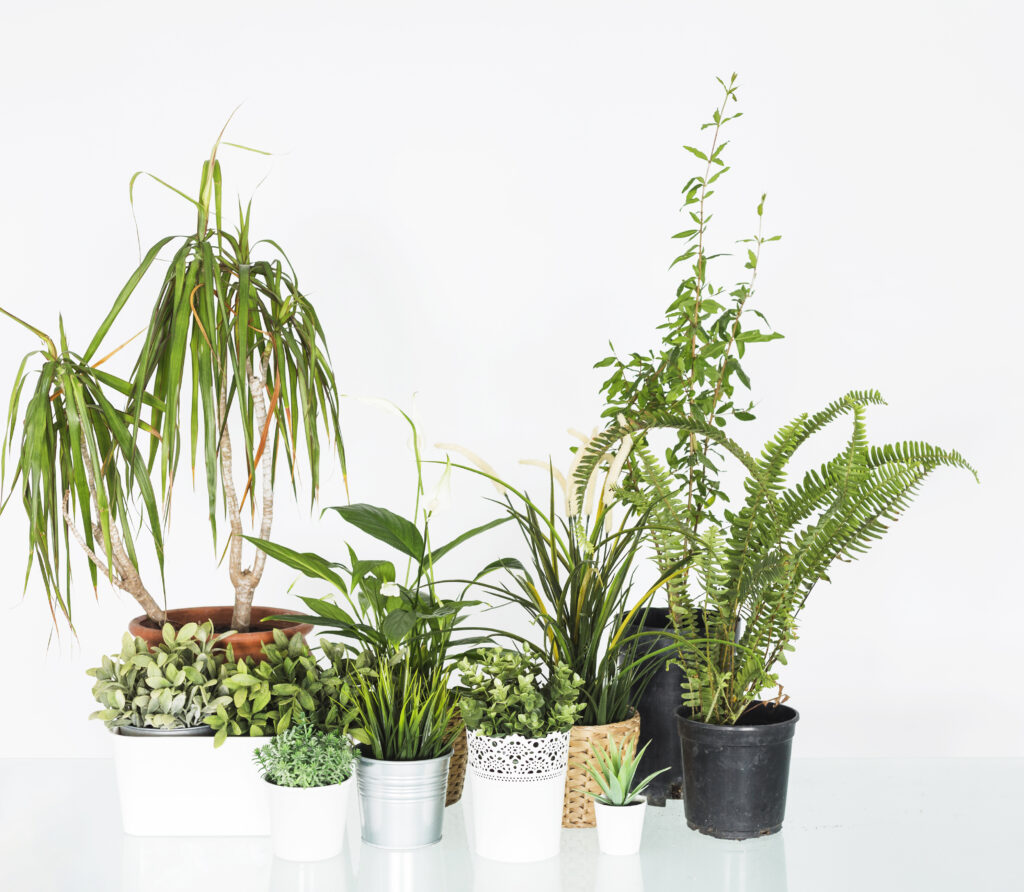
In today’s eco-conscious world, many of us strive to make choices that benefit the environment. When it comes to decorating our homes and offices with greenery, the debate between artificial and real plants often arises. Both options have their merits, but they also come with distinct environmental impacts. Let’s explore the environmental footprint of artificial plants versus real plants to help you make a more informed decision.
Artificial Plants: Pros and Cons
Pros of Artificial Plants
- Longevity: Artificial plants and Trees can last for years, reducing the need for frequent replacements.
- Maintenance-Free: They do not require water, sunlight, or soil, which can save resources.
- Allergen-Free: Artificial plants do not produce pollen, making them a safer choice for people with allergies.
Cons of Artificial Plants
- Production Impact: The manufacturing of artificial plants often involves plastic, which is derived from fossil fuels. This process can release significant amounts of greenhouse gases and other pollutants.
- Non-Biodegradable: Most artificial plants are not biodegradable. When they eventually get discarded, they contribute to landfill waste.
- Transport Emissions: Often produced in countries far from their final market, artificial plants can have a large carbon footprint due to transportation.
Real Plants: Pros and Cons
Pros of Real Plants
- Air Purification: Real plants can improve indoor air quality by absorbing pollutants and releasing oxygen.
- Biodegradability: At the end of their life cycle, real plants decompose naturally and enrich the soil.
- Biodiversity Support: Growing real plants can support local ecosystems, providing habitats and food for insects and other wildlife.
Cons of Real Plants
- Resource Use: Real plants require water, soil, and sometimes fertilizers and pesticides, which can have environmental impacts.
- Maintenance: They need regular care, which can be time-consuming and resource-intensive.
- Shorter Lifespan Indoors: Many indoor plants have shorter lifespans, leading to frequent replacements and additional environmental costs.
Detailed Comparison
Manufacturing and Resource Use
Artificial plants are typically made from plastic, metal, and other synthetic materials. The production of these materials is energy-intensive and relies on non-renewable resources. Additionally, the processes involved can release toxic chemicals into the environment. On the other hand, real plants need natural resources like water and nutrients to grow. The use of fertilizers and pesticides in some cases can lead to soil and water pollution.
Carbon Footprint
The carbon footprint of artificial plants is mostly tied to their production and transportation. Real plants, conversely, can sequester carbon during their growth phase. However, the overall carbon benefit depends on the plant species and the extent of its lifecycle emissions, including resource input and potential waste.
Disposal and End-of-Life
Disposing of artificial plants can be problematic since they are often non-recyclable and non-biodegradable. They can persist in landfills for hundreds of years. Real plants decompose naturally, returning nutrients to the ecosystem, which is a significant environmental benefit.
Making an Eco-Friendly Choice

To make an environmentally conscious decision between artificial and real plants, consider the following tips:
- Choose Sustainable Materials: If opting for artificial plants, look for those made from recycled or sustainable materials.
- Local and Organic: For real plants, choose species that are native to your area and grown organically to reduce the need for chemicals.
- Care Practices: Implement water-saving techniques and use natural fertilizers to minimize the environmental impact of maintaining real plants.
- Longevity and Care: If you struggle to keep plants alive, choose low-maintenance real plants like succulents, which require less water and care.
what is the Final thoughts with clarity?
Both artificial and real plants have their environmental pros and cons. Real plants generally offer more environmental benefits through air purification, carbon sequestration, and biodegradability. However, artificial plants can be a more practical choice for those unable to maintain real plants, especially if sourced sustainably. By considering the environmental impacts and making thoughtful choices, you can enjoy greenery in your space while contributing positively to the planet.
Ready to transform your space with the latest tile trends? Visit our showroom at kusal.com Best Artificial plant Shop in Chennai to explore our wide selection of tiles and get expert advice on your next project. Share your favorite trends with us in the comments below, and don’t forget to subscribe to our newsletter for more design inspiration!
Effectively This Excellent website was built and designed by Kerplunk Media. They productively provide Website Development, Digital Marketing, Video Production, Social Media Marketing & Branding. Kerplunk Media is a leading digital marketing agency based in Pondicherry, Chennai. Check our website https://www.kerplunkmedia.com/ and https://kerplunkmediachennai.com/.

